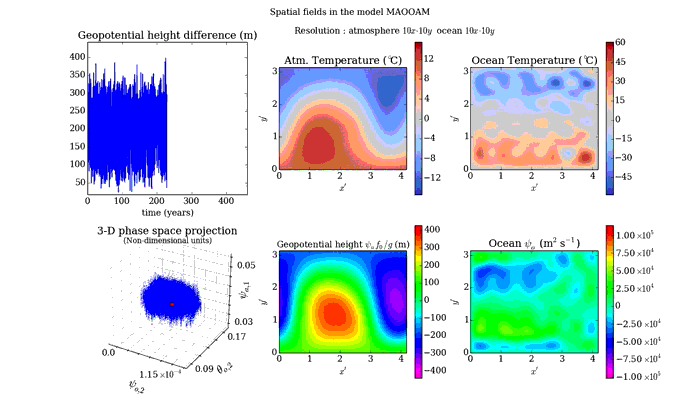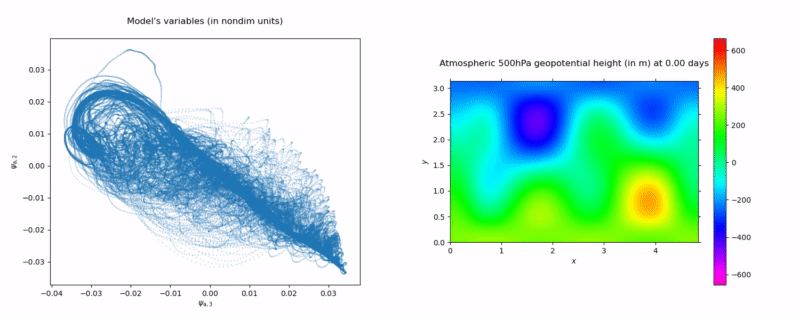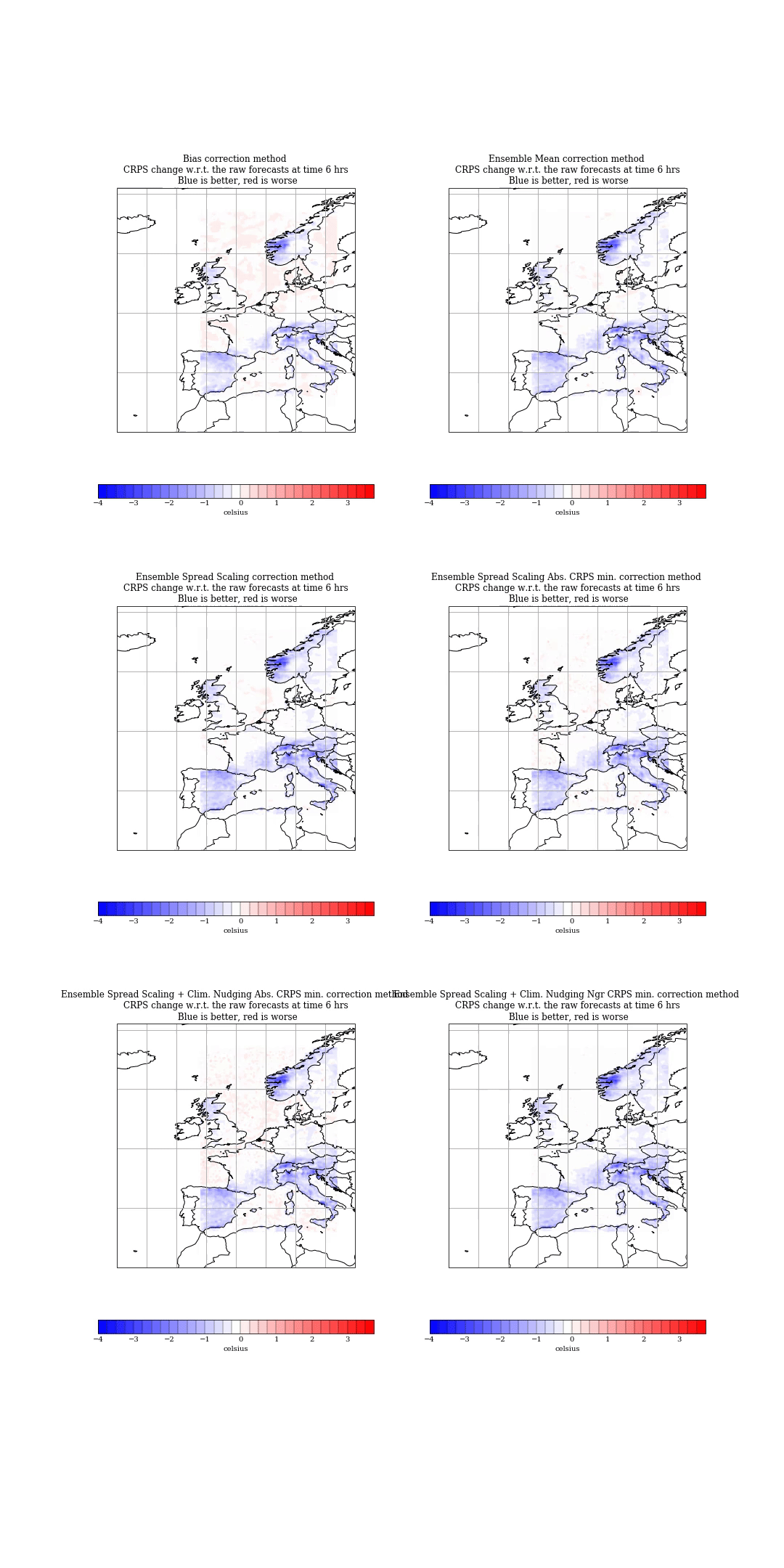Dynamical Meteorology and Climatology Unit
Models & Tools
The codes used in research projects is published on the team's GitHub page.
On this page you will find an overview of the codes currently maintained by the team.
Models
MAOOAM
The Modular Arbitrary-Order Ocean-Atmosphere Model: A coupled ocean-atmosphere model to explore the impact of such coupling on the atmosphere variability.
The atmospheric component of the model is based on the papers of Charney and Straus (1980), Reinhold and Pierrehumbert (1982) and Cehelsky and Tung (1987), all published in the Journal of Atmospheric Sciences. The ocean component is based on the papers of Pierini (2012), Barsugli and Battisti (1998). The coupling between the two components includes wind forcings, radiative and heat exchanges.

Documentation is included with the code.
Reference
-
Charney, J. G. and Straus, D. M.: Form-drag instability, multiple equilibria and propagating planetary waves in baroclinic, orographically forced, planetary wave systems, J. Atmos. Sci., 37, 1157-1176, 1980.
-
Reinhold, B. B. and Pierrehumbert, R. T.: Dynamics of weather regimes: quasi-stationary waves and blocking, Mon. Weather Rev., 110, 1105-1145, 1982.
-
Reinhold, B. B. and Pierrehumbert, R. T.: Corrections to "Dynamics of weather regimes: quasi-stationary waves and blocking", Mon. Weather Rev., 113, 2055-2056, 1985.
-
Barsugli, J. J. and Battisti, D. S.: The basic effects of atmosphere–ocean thermal coupling on midlatitude variability, J. Atmos. Sci., 55, 477-493, 1998.
-
Pierini, S.: Low-frequency variability, coherence resonance, and phase selection in a low-order model of the wind-driven ocean circulation, J. Phys. Oceanogr., 41, 1585-1604, 2011.
-
Cehelsky, P. and Tung, K. K.: Theories of multiple equilibria and weather regimes - A critical reexamination. Part II: Baroclinic two-layer models, Journal of the atmospheric sciences, 44, 3282-3303, 1987.
-
Vannitsem, S. and De Cruz, L.: A 24-variable low-order coupled ocean-atmosphere model: OA-QG-WS v2, Geoscientific Model Development, 7, 649-662, 2014.
-
Vannitsem, S., Demaeyer, J., De Cruz, L., and Ghil, M.: Low-frequency variability and heat transport in a loworder nonlinear coupled ocean-atmosphere model, Physica D: Nonlinear Phenomena, 309, 71-85, 2015.
qgs
Quasi-Geostrophic Spectral model (qgs): A 2-layer quasi-geostrophic atmospheric model in Python. Can be coupled to a simple land or shallow-water ocean component. Reproduces MAOOAM and many other versions.

A comprehensive documentation is available here.
Tools
Pythie
Pythie is a Python package to postprocess weather forecasts. It is - among other things - used to postprocess weather forecasts at RMI.
The documentation is available here.

Liang index
The Liang index, or rate of information transfer, provides a way to quantify causal links between variables, and thus goes beyond classical correlation analyses. It has been developed by Liang & Kleeman (2005) and further details are provided in Liang (2014) for the two-variable case and Liang (2021) for the multi-variable case. The approach has been compared to another causal method (PCMCI) and correlation in Docquier et al. (2024).
Application of this index to climate studies at RMI include: Antarctic surface mass balance (Vannitsem et al., 2019), Arctic sea ice (Docquier et al., 2022; Docquier et al., 2024), Antarctic sea ice (Docquier et al., 2025), indices in the North Pacific and Atlantic regions (Vannitsem & Liang, 2022; Docquier et al., 2024; Vannitsem et al., 2025), ocean-atmosphere interactions using satellite observations (Docquier et al., 2023), Barents Kara sea ice (Dörr et al., 2024). An example of result using the Liang index is provided on the ROADMAP page.
As the originial approach assumes linearity, it does not apply when the system is highly nonlinear. Pires et al. (2024) have developed an extension for the nonlinear case, and it has been recently tested on a reduced-order atmospheric model (Vannitsem et al., 2024).
